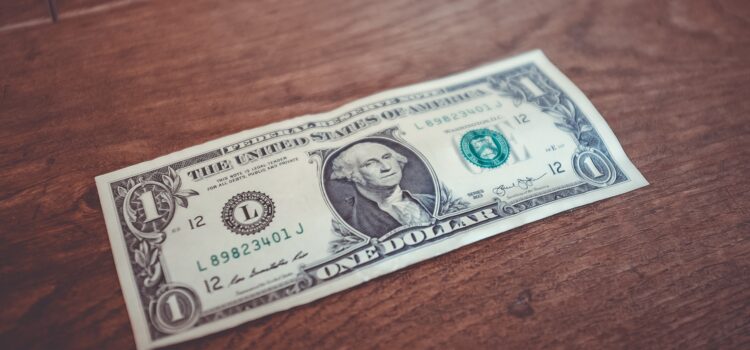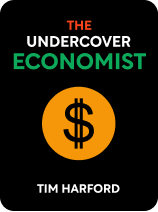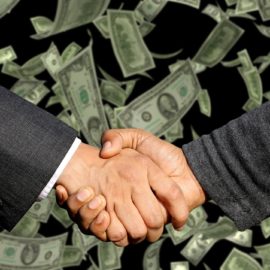

This article is an excerpt from the Shortform book guide to "The Undercover Economist" by Tim Harford. Shortform has the world's best summaries and analyses of books you should be reading.
Like this article? Sign up for a free trial here .
What’s a perfect market in economics? Are perfect markets even possible in the real world, or is it all just theory?
Even though we rarely find perfect markets in the real world, it’s useful to understand the idea of perfect markets because economists usually start there when they see imperfections. Economists attempt to remove these imperfections.
In this article, we’ll discuss the effects of imperfections in the marketplace, or externalities, and discuss when governments should step in to prevent negative externalities.
Perfect Markets and Externalities
In the most basic form, a perfect market in economics is where everyone goes about their lives, selling and buying goods, without any regard for how their actions affect others. Often, though, the actions of one buyer or seller can affect a third party, who’s not involved in the sale of goods or services. This is called an externality. To prevent negative externalities, governments may impose externality charges.
Marginal vs. Average Prices
Let’s use the example of drivers to expand on externalities and externality charges. Cars clog up all of the biggest and best cities in the world. The air pollution that results from this literally kills some bystanders—estimates in the U.S. suggest that 15,000 people die a year from air pollution that’s caused by burning diesel fuel in car engines. In addition to the worst possible externality, death, there are lots of others that come from cities being so clogged by cars, including huge time delays because of traffic that slows down public transportation like buses. Then, there’s the noise, which can drive people out of a city entirely or discourage them from walking so much, which ironically leads to more cars on the streets and more noise pollution.
In other words, lots of people are benefiting from driving themselves. But by benefiting themselves, they’re also harming others. This complicates the idea that everything we do in the market helps create a perfectly efficient system. (If it were perfectly efficient, drivers would have to pay the people whose lives they are making more difficult.)
Drivers do end up paying taxes for having a car. Gas taxes, for example, are high all around the world, and in a lot of places, drivers pay a tax for the privilege of having a car in the form of a license fee.
Here, we can see a distinction between average cost and marginal cost. On average, drivers end up paying a lot of money to keep a car. However, one 20 minute drive to a city center has a low marginal cost—the trip doesn’t cost them any more in license fees and probably won’t use much gas. Drivers thus use their cars frequently in cities because of the low marginal cost, but this clogs up city streets for everyone else. Cities can solve this problem by, instead of having one flat license fee, charging a tax for every time a driver takes a trip in a city.
Charging money for these externalities is a balancing act. We want to keep letting people do things they like, so we don’t want taxes on externalities to be too high. But we also want to make sure that people aren’t destroying the lives of those around them by doing what they want. Essentially, when figuring out externality taxes, we should attempt to imitate perfectly efficient markets as much as possible. We want the total cost to everyone else to be exactly equal to the benefit for one person.
Pricing Life
When making decisions about where to tax and what to fund, governments are attempting to decide how valuable our lives are. Putting in extra stop signs or funding scientific research can help to save lives, but they can also cost citizens money that they might need for their personal expenses. So how do governments make these decisions? They look at their citizens’ behavior. We make all kinds of decisions that establish how much we value our time and our life. For example, some people decide to pay for carbon monoxide tests and get smoke alarms for their houses while some do not.
Let’s say two jobs require about the same amount of training and skill but one is more dangerous than the other. We can measure how much people value their lives by how much better paying the more dangerous job is.
Naturally, every government policy that relies on this information makes assumptions and isn’t perfect. With externality pricing, though, we can rely on people to make their own decisions. If the government levies a relatively heavy tax on driving into a city, then individual actors have to choose how often it’s worth it for them to pay that tax.
Reducing Pollution
An example can explain this phenomenon of choice. The EPA in the United States wanted to reduce acid rain. So, they set up a system where businesses got a quota of “emission permits” that allowed them to emit a certain, small amount of sulfur dioxide, which is what causes acid rain. They were then allowed to choose—buy more emission permits at auction from the government or clean up their emissions by using clean coal or building or installing sulfur scrubbers.
The grand majority of businesses chose the latter—it turned out that when the government attempted to force them to clean up, most businesses just lied about how much money this would cost, but when they were faced with the decision to buy a permit or clean up, they chose to clean up because this was often the cheaper option. Even as prices for these permits began to go down, few polluters decided to buy them—it turned out that at scale, it was cheap to install sulfur scrubbers. The government both reduced emissions in the short term and better understood how much sulfur scrubbers cost, which helped them with their long-term environmental goals.
This leads to a larger point—we should be talking about climate change in terms of economics rather than in terms of morality. As we’ve already seen, people generally make choices based on their own self-interest. So if the government were to start thinking about the climate change problem as fixable through the kind of regulations that the EPA put on sulfur dioxide, we could begin to change individual behavior. Moral posturing doesn’t have the same impact. Pollution creates a huge externality—if the government taxed it as such, polluters would manage to find cheap ways to keep producing energy without having to pay the tax.
Positive Externalities
Just as there are many actions that create negative externalities, there are many others that create positive externalities. If someone opens up a lovely sidewalk café, the streets are more pleasant. If another agrees to vaccinate her children, then everyone around her kids is safer. Sometimes, though, people don’t do actions that create positive externalities because they are too expensive or time consuming.
So, just like with taxes on negative externalities, we should do the inverse for positive externalities. If subsidies were available for vaccinating children or opening up a nice, community-serving business, more people would avail themselves of those opportunities.
However, governments should be careful of spending money when they don’t need to. The private sector can sometimes perfectly solve their problems. A landlord, for example, is likely to be willing to spend some money on paint for her tenants, because not only will this improve the quality of life for the tenants, but it will also allow the landlord to raise the price on the home to the next group of tenants who move in. The government has no reason to step in in this situation. > Economics vs. GDP: Many people mistakenly confuse the economy with figures like the Gross Domestic Product, or GDP. Government actions like pollution taxes might make the GDP of a nation smaller, but they’ll help the economy because the wider ranging “economy” is concerned more with how to improve people’s quality of life.

———End of Preview———
Like what you just read? Read the rest of the world's best book summary and analysis of Tim Harford's "The Undercover Economist" at Shortform .
Here's what you'll find in our full The Undercover Economist summary :
- How to think like an economist
- How to use principles like scarcity, price targeting, the stock market, and game theory to make better decisions every day
- Why the economy is mostly about people, not complex math, graphs, or jargon






